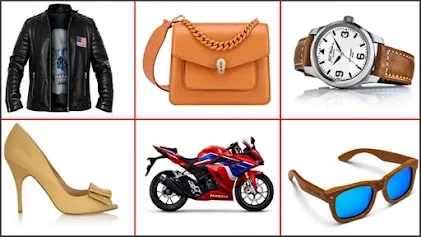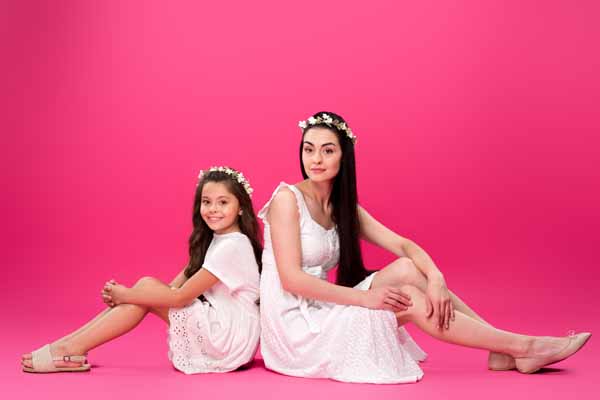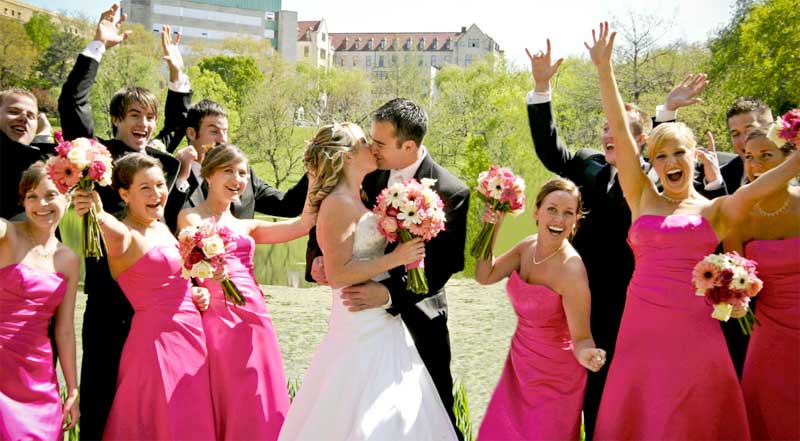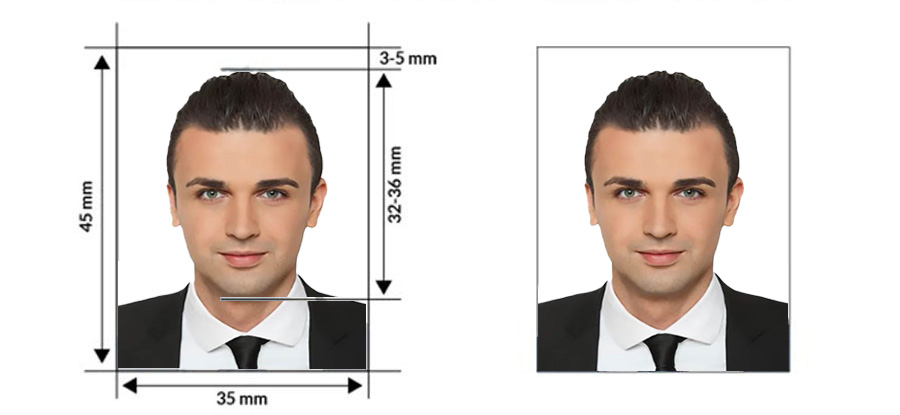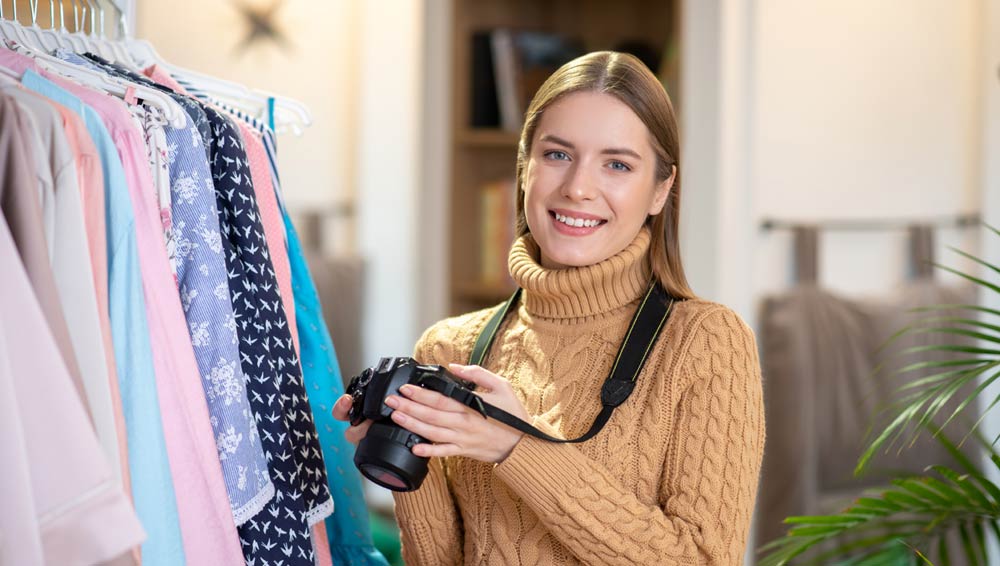
How to Take Pictures of Clothes to Sell
Are you looking to sell your clothes online but struggling to capture high-quality images that truly showcase their appeal? In this comprehensive guide, we will walk you through the process of how to take pictures of clothes to sell. Whether you’re a seasoned seller or just starting out, these tips and techniques will help you capture stunning images that attract potential buyers and increase your chances of making successful sales. So grab your camera and let’s dive in!
Introduction
In the fast-paced world of online shopping, high-quality visuals are crucial in capturing the attention of potential buyers. When it comes to selling clothes online, the power of compelling images cannot be overstated. By showcasing your items in the best possible light, you can attract more customers, increase your sales, and establish your brand’s credibility.
In this guide, we will provide you with practical tips and techniques for capturing stunning pictures of your clothes. From setting up the perfect background to editing your photos for optimal appeal, we will cover everything you need to know to take your online clothing business to the next level.
Why Quality Pictures Matter
The online marketplace is highly competitive, and buyers have countless options at their fingertips. To stand out from the crowd and grab the attention of potential customers, you need to present your clothes in the best possible light. High-quality pictures play a vital role in conveying the true essence and appeal of your garments. When customers browse through online listings, they rely heavily on visuals to make their purchasing decisions. If your images are blurry, poorly lit, or unprofessional, it can leave a negative impression and discourage buyers from exploring further.
By investing time and effort into capturing quality pictures, you can create a positive first impression and pique the interest of potential customers. Compelling visuals not only showcase the details, colors, and textures of your clothes but also help buyers envision themselves wearing the garments. When customers can visualize how the clothes will look and fit, they are more likely to make a purchase.
Find Out The Best Apparel Photo Editing Service Provider
Understanding Your Target Audience
Before diving into the technical aspects of photography, it’s important to understand your target audience. Knowing who your potential buyers are will guide your decisions when it comes to styling, setting, and capturing your clothing images.
Consider the demographic characteristics of your target audience, such as age, gender, and style preferences. Are you selling trendy clothing for young adults or sophisticated attire for professionals? Understanding your audience’s preferences will help you tailor your visuals to resonate with them and increase the chances of making a sale.
Researching your target audience can also provide insights into their preferred online platforms, social media channels, and shopping habits. By understanding where they spend their time and what influences their purchasing decisions, you can strategically position your clothing images to reach them effectively.
Setting Up the Perfect Background
The background of your clothing images plays a significant role in creating a visually appealing composition. It should complement the clothes without overwhelming or distracting the viewer. Here are some tips to help you set up the perfect background for your clothing photos:
- Choose a neutral backdrop: Opt for a clean and simple background that won’t overshadow the clothes. Solid colors like white, gray, or black work well, as they provide a blank canvas to showcase your garments effectively.
- Consider textured backdrops: If you want to add some visual interest to your images, you can experiment with textured backdrops. Fabrics like linen, canvas, or seamless paper can add depth and create an aesthetically pleasing backdrop.
- Avoid clutter: Ensure that the background is free from distractions and clutter. Remove any objects or elements that don’t contribute to the overall composition or take away attention from the clothes.
- Create a consistent look: If you’re planning to sell multiple items or maintain a cohesive brand identity, consider using a consistent background for all your clothing images. This helps create a professional and unified aesthetic across your product listings.
Remember, the background should enhance the clothes, not compete with them. Keep it simple, clean, and visually pleasing to create a professional and appealing impression.
Lighting: The Key to Great Photos
Proper lighting is the cornerstone of any good photograph, and it plays an essential role in showcasing your clothes accurately. When it comes to clothing photography, you want to ensure that the lighting is even, highlights the details, and accurately represents the colors of your garments. Here are some lighting tips to help you capture great photos:
- Natural light is your friend: Whenever possible, take advantage of natural light sources such as large windows or outdoor settings. Natural light provides a soft and flattering illumination that brings out the true colors and textures of your clothes. Set up your shooting area near a window during the daytime for the best results.
- Avoid harsh shadows: Harsh shadows can distort the appearance of your garments and make them appear less appealing. To minimize shadows, you can diffuse the natural light by using sheer curtains
- Use reflectors or diffusers: If the natural light is too harsh or creates unwanted shadows, you can use reflectors or diffusers to modify the lighting conditions. Reflectors bounce light back onto the subject, reducing shadows and creating a more balanced illumination. Diffusers, on the other hand, soften the light by scattering it, resulting in a softer and more even lighting effect.
- Invest in lighting equipment: If natural light is limited or inconsistent, investing in artificial lighting equipment can greatly enhance your clothing photography. Continuous LED lights or strobe lights with softboxes or umbrellas can provide you with full control over the lighting conditions. Position the lights at different angles to create dimension and highlight the details of the clothes.
- Avoid mixed lighting sources: When working with artificial lighting, ensure that all your light sources have the same color temperature. Mixing different light temperatures can create a color cast on your images and make the clothes appear inaccurate. Use daylight-balanced bulbs or adjust the white balance settings on your camera to maintain color accuracy.
Remember, lighting can make or break your clothing photos. Take the time to experiment with different lighting setups and find the one that best showcases the colors, textures, and details of your garments.
Choosing the Right Camera
While you don’t need a professional-grade camera to capture great clothing photos, investing in a decent camera can significantly improve the quality of your images. Here are some factors to consider when choosing a camera for clothing photography:
- Resolution: Look for a camera with a high resolution to capture sharp and detailed images. A resolution of at least 12 megapixels is recommended, although higher resolutions are beneficial if you plan to crop or print your photos.
- Interchangeable lenses: Opt for a camera that allows you to use interchangeable lenses. Different lenses offer various focal lengths and perspectives, giving you more flexibility in capturing different types of clothing and compositions. A lens with a focal length of around 35-50mm is generally suitable for clothing photography.
- Manual controls: Ensure that the camera provides manual control over settings such as aperture, shutter speed, and ISO. Manual control allows you to have full creative control over the exposure and depth of field, resulting in more professional-looking photos.
- Image stabilization: Look for cameras or lenses with built-in image stabilization to minimize camera shake and produce sharper images, especially in low-light situations.
- Tethering capability: If you plan to shoot a large number of clothing items, consider a camera that supports tethering. Tethering allows you to connect your camera directly to a computer or laptop, providing a real-time preview of the images on a larger screen and enabling efficient image management.
Remember, the camera is just a tool, and the skill lies in the hands of the photographer. Even with a smartphone camera, you can capture impressive clothing photos by utilizing proper lighting, composition, and editing techniques.
Using Props and Accessories
Props and accessories can add visual interest and help create a story or lifestyle around your clothing items. By carefully selecting and incorporating props into your images, you can evoke emotions and create a stronger connection with your target audience. Here are some ideas for using props and accessories in your clothing photos:
- Mannequins or dress forms: Using mannequins or dress forms can help showcase the fit and shape of the clothes. It allows potential buyers to visualize how the garments will look when worn. Dress the mannequins or dress forms according to the style and aesthetic of the clothing to create an appealing composition.
- Jewelry and accessories: Pairing your clothes with appropriate jewelry and accessories can enhance the overall look and appeal. For example, if you’re selling a summer dress, you can add a statement necklace or a floppy hat to create a cohesive and fashionable ensemble.
- Lifestyle props: Consider incorporating props that reflect the lifestyle or theme associated with your clothing. For instance, if you specialize in activewear, you can use yoga mats, water bottles, or workout equipment to create a fitness-inspired atmosphere.
- Background elements: Adding relevant background elements can help tell a visual story and create a cohesive composition. For example, if you’re selling vintage clothing, you can incorporate vintage furniture, retro posters, or old vinyl records in the background to reinforce the nostalgic vibe.
- Minimalist props: Sometimes, less is more. Minimalist props like a simple chair, a potted plant, or a strategically placed book can add subtle visual interest without overpowering the main focus, which is the clothing.
When using props, ensure they enhance the clothing rather than overshadow it. The props should complement the style, aesthetic, and target audience of your garments. Experiment with different props and accessories to create visually appealing compositions that resonate with your customers.
Optimal Clothing Arrangement
How you arrange and present your clothing items can significantly impact their visual appeal and desirability. Here are some tips for optimal clothing arrangement:
- Neat and wrinkle-free: Before photographing your clothes, ensure they are clean, neatly folded or hung, and free of wrinkles. Wrinkled or messy clothes can create a negative impression and make the items appear less appealing.
- Consider symmetry: Symmetrical clothing arrangements can create a sense of balance and visual harmony. Arrange the garments in a way that is pleasing to the eye. For example, if you’re showcasing multiple tops, arrange them symmetrically by size or color.
- Layering and texture: Experiment with layering different clothing items to create depth and visual interest. For example, you can layer a jacket over a dress or style a sweater with a shirt underneath. This technique allows potential buyers to envision different ways of styling the garments.
- Grouping by category: If you’re selling multiple types of clothing, consider grouping them by category to create a cohesive display. For instance, group all the dresses together, followed by tops, bottoms, and accessories. This organization helps buyers navigate your inventory more easily.
- Use clothing hangers: When photographing clothes on hangers, choose sturdy and visually appealing hangers that complement the style of your garments. Avoid using mismatched or distracting hangers that can take away attention from the clothes.
Remember, the goal of clothing arrangement is to create visually appealing compositions that highlight the key features and details of your garments. Experiment with different arrangements and find the one that best showcases your clothing items.
Finding the Best Angles
Capturing your clothing from the right angles can accentuate their best features and create a visually pleasing composition. Here are some tips for finding the best angles for your clothing photography:
- Front view: Start with a straightforward front view of the clothing item. This angle provides a clear and comprehensive representation of the garment, allowing potential buyers to see the overall design, pattern, and color.
- Side view: Capture the clothing from the side to showcase the silhouette and fit. This angle is particularly useful for dresses, skirts, and pants, as it helps buyers visualize the length and shape.
- Back view: Don’t forget to include a back view of the clothing item, especially if there are unique design elements, patterns, or embellishments at the back. This angle provides a comprehensive view and allows potential buyers to appreciate the garment from all angles.
- Detail shots: Zoom in and capture close-up detail shots to showcase the intricate details, textures, and embellishments of the clothing. This could include shots of buttons, stitching, lace, or any unique features that set your garments apart.
- Different perspectives: Experiment with different perspectives and angles to add visual interest. Try capturing the clothing from a high angle, a low angle, or even from a slightly tilted perspective. These creative angles can create a dynamic composition and make your photos stand out.
- Model or mannequin shots: If you choose to use a model or mannequin, photograph the clothing from various angles to provide a complete view. Capture full-body shots, close-ups, and shots from different sides to showcase the fit, style, and overall look of the garments.
Remember to maintain consistency in your angles throughout your product listings. This allows potential buyers to compare different items easily and develop a sense of familiarity with your photography style.
Getting the Right Focus
Achieving sharp and focused images is essential in showcasing the details and quality of your clothing. Follow these tips to ensure you get the right focus:
- Manual focus: While autofocus can be convenient, manually adjusting the focus gives you more control over which part of the clothing you want to emphasize. Use the focus ring on your camera or smartphone to adjust the focus until the desired area is sharp and clear.
- Focus on key details: When photographing clothing, focus on the essential details that differentiate your garments. For example, if you’re selling a dress with intricate lacework, ensure the lace is in sharp focus. By highlighting the unique features, you draw attention to the quality and craftsmanship of the clothing.
- Use a tripod: To achieve maximum sharpness, use a tripod to stabilize your camera or smartphone. This helps eliminate camera shake and ensures consistent focus across your images. A tripod is especially useful when shooting in low-light conditions or when capturing longer exposure times.
- Focus stacking: If you want to capture an entire garment in sharp focus, consider using focus stacking. This technique involves taking multiple images with different focus points and combining them in post-processing to create a final image where the entire garment is in focus.
- Zoom in for precision: When reviewing your images, zoom in to check for focus accuracy. Pay attention to the details and make adjustments as necessary. It’s better to re-shoot than to settle for images with blurred or out-of-focus areas.
Getting the focus right ensures that your clothing images are sharp, clear, and visually engaging. Take the time to experiment with different focus techniques and find the approach that works best for your photography style.
Perfecting Color Accuracy
Accurate color representation is crucial in clothing photography as it directly impacts buyers’ perception of the garments. Here are some tips to help you perfect color accuracy:
- White balance: Set the correct white balance on your camera or adjust it in post-processing to ensure accurate color reproduction. Different light sources have varying color temperatures, and adjusting the white balance helps neutralize any color casts and present the clothes as true to life as possible.
- Color calibration: Consider using a color calibration tool to ensure consistent and accurate colors across your images. These tools help you calibrate your monitor and camera settings to display colors accurately, providing a reliable reference for color accuracy during post-processing.
- Color reference chart: Include a color reference chart in your photoshoot setup. These charts have known color values that can be used as a reference point during editing to ensure accurate color representation. This helps you achieve consistent and reliable color accuracy across your clothing images.
- Avoid harsh lighting: Harsh lighting conditions, such as direct sunlight or artificial light with strong color casts, can affect the color accuracy of your photos. Whenever possible, use soft and diffused lighting to create a more even and neutral illumination that accurately represents the colors of your garments.
- Compare to physical samples: If color accuracy is crucial for your online business, compare your photographed garments to physical samples under consistent lighting conditions. This helps you validate the color accuracy and make any necessary adjustments during the editing process.
Remember, accurately representing the colors of your clothing builds trust with potential buyers and reduces the likelihood of returns or dissatisfaction. Pay attention to color accuracy throughout your photography and editing process to ensure your garments look as appealing and true-to-life as possible.
Editing Your Photos
Editing is a crucial step in enhancing the visual appeal of your clothing photos. It allows you to fine-tune the colors, exposure, and overall look of your images. Here are some editing tips to consider:
- Use editing software: Invest in reliable photo editing software such as Adobe Photoshop or Lightroom. These tools offer a wide range of editing capabilities and allow you to have full control over the adjustments you make to your images.
- Crop and straighten: Crop your images to remove any distracting elements or unnecessary background space. Straighten the horizon and align the clothing within the frame for a more polished and professional look.
- Adjust exposure: Use exposure adjustments to balance the brightness and darkness levels in your images. Ensure that the clothing is well-lit, the details are visible, and the overall exposure is pleasing to the eye.
- Enhance colors: Fine-tune the colors of your clothing to ensure they are accurate and appealing. Adjust the white balance, saturation, and vibrance to bring out the true colors of the garments without over-saturating or distorting them.
- Sharpen and enhance details: Apply selective sharpening techniques to enhance the details and textures of the clothing. Be careful not to over-sharpen, as it can create a harsh and unnatural look.
- Consistency is key: Maintain consistency in your editing style across all your clothing images. This creates a cohesive and professional aesthetic that helps build brand recognition and trust with potential buyers.
Editing should be used to enhance the natural beauty of your clothing, not to drastically alter their appearance. Strive for a balance between a polished look and a realistic representation of the garments.
The Ultimate Guide to Hire Professional Photo Editor Photo Fix Team
Creating Eye-Catching Thumbnails
Thumbnails are the first impression potential buyers get of your clothing items. Creating eye-catching thumbnails that stand out among the sea of listings is essential for attracting clicks and potential customers. Here are some tips for creating appealing thumbnails:
- Highlight the key element: Choose a thumbnail image that prominently features the most captivating aspect of the clothing. It could be a unique design detail, a vibrant color, or a stylish combination of garments.
- Keep it simple: Avoid cluttered or busy thumbnail images. Opt for clean and simple compositions that allow the clothing to be the focal point. A clear and uncluttered thumbnail image will attract attention and make it easier for potential buyers to understand the garment at a glance.
- Use high-quality images: Ensure that your thumbnail images are high-resolution and visually appealing. Blurry or pixelated thumbnails can create a negative impression and deter potential buyers from clicking on your listings. Invest time in capturing and editing high-quality images that accurately represent the garments.
- Consider the aspect ratio: Thumbnail images often appear in a square or rectangular format, depending on the platform. Make sure your images are properly cropped and resized to fit within the designated space without being stretched or distorted.
- Use consistent branding: Develop a consistent visual branding for your thumbnail images. This can include using a specific color scheme, typography, or logo placement. Consistency in your branding helps potential buyers recognize your listings and builds brand recognition.
- Add overlay text or graphics: Consider adding text or graphics to your thumbnail images to highlight key features or promotions. For example, you can include text like “New Arrival,” “Limited Stock,” or “Sale” to capture attention and create a sense of urgency.
Remember, thumbnails serve as a gateway to your clothing listings. Make sure they accurately represent the garments and entice potential buyers to click and explore further.
Writing Compelling Product Descriptions
While high-quality images are essential, well-crafted product descriptions play a crucial role in persuading potential buyers to make a purchase. Here are some tips for writing compelling product descriptions:
- Highlight the key features: Start by clearly and concisely describing the most important features of the clothing. Focus on aspects such as the material, fit, style, and any unique design elements that set the garments apart.
- Use descriptive language: Utilize vivid and engaging language to paint a picture of the clothing in the reader’s mind. Describe the textures, colors, and sensations that the garments evoke. For example, instead of saying “blue shirt,” you could say “rich cobalt blue shirt that exudes confidence and sophistication.”
- Provide sizing and measurements: Include accurate sizing information to help potential buyers determine if the garment will fit them. Specify measurements for key areas such as chest, waist, hips, and length. This reduces the likelihood of returns and ensures a positive customer experience.
- Tell a story or create a lifestyle: Craft product descriptions that go beyond just listing features. Create a narrative around the clothing, telling a story or invoking a lifestyle that resonates with your target audience. For example, if you’re selling activewear, describe how the garments are designed to enhance performance and empower an active lifestyle.
- Use bullet points or lists: Break down the key features and benefits of the clothing using bullet points or lists. This makes the information easily scannable and helps potential buyers quickly understand the value of the garments.
- Incorporate keywords: Research relevant keywords related to your clothing items and incorporate them naturally into your product descriptions. This can help improve your visibility in search engine results and increase the chances of attracting organic traffic.
Remember, your product descriptions should be informative, engaging, and persuasive. They should provide enough information for potential buyers to make an informed decision while creating a sense of excitement and desire for the garments.
Choosing the Right Online Platforms
Choosing the right online platforms to sell your clothing is crucial for reaching your target audience and maximizing your sales potential. Here are some factors to consider when choosing the right online platforms to sell your clothing:
- Research popular platforms: Start by researching popular online platforms that cater to clothing sellers. Look for platforms that have a large user base and a strong presence in your target market. Some popular options include Etsy, eBay, Amazon, and dedicated fashion marketplaces like Depop or Poshmark.
- Consider your target audience: Evaluate the demographics and preferences of your target audience. Are they more likely to shop on general marketplaces or niche platforms? Understanding your audience will help you choose the platforms where your clothing is most likely to be seen and purchased.
- Platform policies and fees: Carefully review the policies and fee structures of each platform you’re considering. Look for platforms that align with your business needs and offer reasonable fees for listing, selling, and payment processing. Consider the level of customer support and seller tools provided by the platform as well.
- Seller tools and features: Evaluate the seller tools and features offered by each platform. Look for features like inventory management, promotion options, analytics, and marketing support. These tools can streamline your selling process and help you optimize your listings for better visibility and sales.
- Seller community and support: Consider the seller community and support available on each platform. Look for platforms that provide resources, forums, or networking opportunities to connect with other sellers and gain valuable insights. Good support from the platform can make your selling experience smoother and more successful.
- Integration with social media: Consider platforms that offer seamless integration with social media platforms. This allows you to cross-promote your clothing on different channels and reach a wider audience. Look for platforms that allow easy sharing of listings on social media or provide built-in social selling features.
Remember, choosing the right online platforms is a strategic decision that can significantly impact your online clothing business. Take the time to research, evaluate, and test different platforms to find the ones that align with your business goals and target audience.
Understanding SEO for Image Optimization
Search engine optimization (SEO) for image optimization is crucial in increasing the visibility of your clothing images in search engine results. Here are some tips to help you optimize your clothing images for SEO:
- File naming: Give your image files descriptive and keyword-rich names. Instead of using generic names like “IMG_1234.jpg,” use names that include relevant keywords related to the clothing item. For example, “blue-vintage-dress.jpg” is more descriptive and SEO-friendly.
- Alt tags: Alt tags or alternative text provide a textual description of your images. Use descriptive and keyword-rich alt tags that accurately describe the clothing item. Alt tags not only improve accessibility but also help search engines understand the content of your images.
- Image file size and compression: Optimize your image file size by compressing them without compromising image quality. Large image files can slow down your website’s loading speed, which can negatively impact your SEO. Use image compression tools or plugins to reduce file sizes while maintaining visual quality.
- Image sitemap: Include your clothing images in an image sitemap, a separate XML sitemap specifically for images. Submitting an image sitemap to search engines helps them discover and index your images more efficiently, improving their visibility in image search results.
- Page context and content: Place your clothing images within relevant pages or blog posts that provide context and supporting content. This helps search engines understand the relevance and meaning of your images within the overall page content.
- External linking: When appropriate, include external links from your image captions or descriptions to authoritative and relevant websites. This can enhance the credibility of your content and provide additional value to your visitors. For example, if you’re selling vintage clothing, you can link to articles about fashion history or influential designers.
- Image schema markup: Implement image schema markup on your website to provide search engines with structured data about your images. Schema markup helps search engines understand the context and details of your images, improving their visibility in search results.
- Image optimization for speed: Optimize your clothing images to ensure fast loading times. Compress your images, use the appropriate image format (JPEG for photographs, PNG for transparent or line art images), and resize them to the optimal dimensions for your website. Faster loading times improve user experience and can positively impact your search rankings.
Remember, optimizing your clothing images for SEO helps improve their visibility in search engine results, driving more organic traffic to your website or online listings.
Leveraging Social Media
Social media platforms provide excellent opportunities to showcase your clothing and reach a broader audience. Here are some tips for leveraging social media to sell your clothes:
- Choose the right platforms: Identify the social media platforms where your target audience is most active. Instagram, Facebook, and Pinterest are popular platforms for fashion and clothing-related content. Focus on platforms that align with your target market and provide features suitable for showcasing your clothing.
- Visual storytelling: Use social media to tell a visual story about your clothing brand. Showcase your garments in engaging and visually appealing ways. Experiment with different styles of photography, compositions, and themes that resonate with your target audience.
- Engage with your audience: Actively engage with your followers by responding to comments, messages, and inquiries promptly. Build a relationship with your audience by sharing behind-the-scenes content, sneak peeks, or styling tips. Encourage user-generated content by creating branded hashtags or running contests and giveaways.
- Collaborate with influencers: Partner with influencers or fashion bloggers who align with your brand and target audience. Collaborate on sponsored posts or product reviews to expand your reach and gain exposure to a wider audience. Influencer collaborations can help build credibility and trust with potential buyers.
- Use video content: Incorporate video content into your social media strategy. Create short videos showcasing your clothing, demonstrating outfit ideas, or providing styling tips. Video content is highly engaging and can help you stand out in a crowded social media landscape.
- Paid advertising: Consider utilizing paid advertising options on social media platforms to increase the visibility of your clothing. Targeted ads can help you reach specific demographics, locations, or interests that align with your target audience. Experiment with different ad formats and targeting options to find what works best for your brand.
Remember, social media is not just a promotional tool but also a platform for building a community and fostering relationships with your audience. Be authentic, consistent, and responsive to create a strong presence and drive engagement.
Utilizing Customer Testimonials
Customer testimonials are powerful tools for building trust and credibility in your clothing business. Here’s how you can effectively utilize customer testimonials:
- Collect and curate testimonials: Reach out to satisfied customers and ask them for feedback or testimonials about their experience with your clothing. Collect a variety of testimonials that highlight different aspects, such as product quality, customer service, or overall satisfaction. Curate these testimonials to showcase the positive experiences of your customers.
- Display testimonials on your website: Create a dedicated page on your website to display customer testimonials. Showcase the testimonials prominently, using visually appealing design elements. Include the customer’s name, photo (with their permission), and a brief description of their experience. This helps potential buyers see real feedback from satisfied customers, boosting their confidence in your clothing.
- Incorporate testimonials in product descriptions: Integrate snippets of customer testimonials within your product descriptions. Highlight specific aspects or benefits of the clothing that were praised by customers. This not only adds credibility but also provides social proof, encouraging potential buyers to make a purchase.
- Share testimonials on social media: Utilize your social media platforms to share customer testimonials. Create visually appealing graphics or images with customer quotes and feedback. Include a link to the product or your website, making it easy for followers to explore further.
- Create testimonial videos: Request customers to provide video testimonials sharing their experience with your clothing. These videos can be shared on your website, social media platforms, or even in email marketing campaigns. Video testimonials add a personal touch and allow potential buyers to hear directly from satisfied customers.
- Request reviews and ratings: Encourage customers to leave reviews and ratings on platforms like Google, Yelp, or specific review sites. Positive reviews and high ratings contribute to your online reputation and can attract new customers. Be proactive in asking for reviews and respond to them in a timely and appreciative manner.
- Use testimonials in email marketing: Incorporate customer testimonials in your email marketing campaigns. Feature testimonials in newsletters, promotional emails, or follow-up emails. This reminds existing customers of their positive experience and exposes potential customers to the positive feedback from others.
Customer testimonials are valuable assets for your clothing business. They provide social proof, build trust, and help potential buyers make informed decisions. By utilizing testimonials effectively, you can enhance your brand reputation and attract more customers.
Best Products Clipping Path Service Provider – Photo Fix Team
Conclusion
Photography is an art, and mastering “How to Take Pictures of Clothes to Sell” requires practice and exploration. Refine your skills, stay updated on trends, and continuously seek ways to improve your clothing photography. With dedication and a keen eye, you can create captivating images that make your clothes stand out in the competitive online marketplace.
Investing in “How to Take Pictures of Clothes to Sell” plays a crucial role in the online fashion industry. By mastering this art form, you can set yourself apart from the competition. Invest time in honing your skills, stay updated with the latest trends and techniques, and always strive for improvement. With dedication, creativity, and attention to detail, you can capture stunning images that captivate your audience and drive the success of your online clothing business.
So, grab your camera, gather your props, and start snapping pictures that truly showcase the beauty and appeal of your clothing. Remember, each photograph tells a story and has the power to make a lasting impression on potential buyers. With the right approach and a passion for your craft, you can take your clothing photography to new heights and achieve the success you desire.
Thank you for reading this comprehensive guide on “How to Take Pictures of Clothes to Sell.” By implementing the strategies and techniques discussed, you can enhance the visual appeal of your clothing, attract more potential buyers, and increase your sales. Remember to focus on creating compelling images that accurately represent your garments, optimize them for search engine visibility, leverage the power of social media, and utilize customer testimonials to build trust.
Frequently Asked Questions (FAQs)
-
Q: How can I ensure that the clothes look appealing and attractive in the photos?
A: To make your clothes look appealing, use proper lighting techniques, choose an appropriate background, and pay attention to details such as ironing and styling. Experiment with different angles and compositions to find the most flattering way to showcase the garments.
-
Q: Can I use my smartphone for clothing photography, or do I need a professional camera?
A: You can use a smartphone for clothing photography, especially if it has a high-quality camera. Smartphones today offer advanced features and image quality that can rival some entry-level cameras. Just ensure good lighting and follow the composition tips mentioned earlier.
-
Q: How important is it to accurately represent the colors of the clothes in the photos?
A: Accurate color representation is crucial as it allows customers to make informed decisions. Ensure proper white balance, use color calibration tools, and compare the photographed garments to physical samples under consistent lighting to achieve color accuracy.
-
Q: Should I edit my clothing photos before uploading them to online platforms?
A: Yes, editing your clothing photos can greatly enhance their visual appeal. Adjusting exposure, colors, and sharpness can help highlight the details and make the garments more attractive. However, remember to maintain a natural and realistic representation of the clothing.
-
Q: How can I optimize my clothing images for search engine visibility?
A: Optimize your clothing images by using descriptive file names, adding alt tags, compressing file sizes, and utilizing image schema markup. Ensure that your images are relevant to the page content and implement SEO practices for the entire webpage as well.
-
Q: Which social media platforms are best for promoting clothing items?
A: The choice of social media platforms depends on your target audience. Instagram is popular for fashion and visual content, while Facebook allows you to reach a wide range of users. Pinterest is great for sharing visual inspiration, and platforms like TikTok and YouTube can be effective for showcasing your clothing through video content.
-
Q: How can I leverage social media to drive sales for my clothing business?
A: Use social media to build a strong brand presence, engage with your audience through compelling content, collaborate with influencers, run targeted ad campaigns, and encourage user-generated content. Focus on creating a community and providing value to your followers, which can lead to increased brand awareness and sales.
-
Q: How can I effectively use customer testimonials to boost trust and credibility?
A: Collect and curate testimonials from satisfied customers, display them on your website, incorporate them in product descriptions, share them on social media, and create testimonial videos. Encourage customers to leave reviews and ratings on external platforms. Testimonials provide social proof and build trust among potential buyers.
-
Q: Are there any legal considerations when using customer testimonials?
A: Yes, it’s important to obtain permission from customers before using their testimonials, including any accompanying photos or videos. Ensure compliance with privacy laws and guidelines related to the use of customer content. Maintain transparency and honesty in your use of testimonials.
-
Q: How can I choose the right online platforms to sell my clothing?
A: Research popular platforms, consider your target audience, review platform policies and fees, evaluate seller tools and features, assess the seller community and support, and consider integration with social media. Choose platforms that align with your business needs, target audience, and provide a positive selling experience.
-
Q: Is it necessary to invest in professional lighting equipment for clothing photography?
A: While professional lighting equipment can enhance your photography, it is not a necessity. You can achieve great results using natural light or inexpensive DIY lighting setups. Experiment with different lighting techniques and find the approach that works best for your budget and desired aesthetic.
-
Q: How can I create eye-catching thumbnails for my clothing listings?
A: Highlight key elements of the clothing, keep the composition simple and clean, use high-quality images, consider the platform’s aspect ratio, maintain consistent branding, and consider adding overlay text or graphics. Thumbnails should accurately represent the garment and entice potential buyers to click on your listings.
How Outsourcing Photo Editing Boosts Your Business
In the fast-paced digital age, the visual representation of your business is paramount. High-quality images…
How to Plan the Perfect Mommy and Me Photoshoot
beautiful mother and daughter in white dresses sitting back to back and smiling at camera…
Wedding Party Photos: Trends to Try in 2024
Wedding Party Photos: Trends to Try in 2024 Embracing New Trends in Wedding Party Photos…
How to Increase Ecommerce Conversion Rate?
How to increase ecommerce conversion rate? Introduction Overview of Ecommerce Conversion Rates Ecommerce conversion rates…
How to Edit Passport Size Photo? Like a Pro: From Snap to Official Stamp
Choosing the Right Tools for Editing Understanding Different Editing Tools When it comes to editing…
How to Fix Blurry Photos in Photoshop? 2 Minute Fixes!
How to Fix Blurry Photos in Photoshop? 2 Minute Fixes! Introduction Uh oh, just downloaded…

